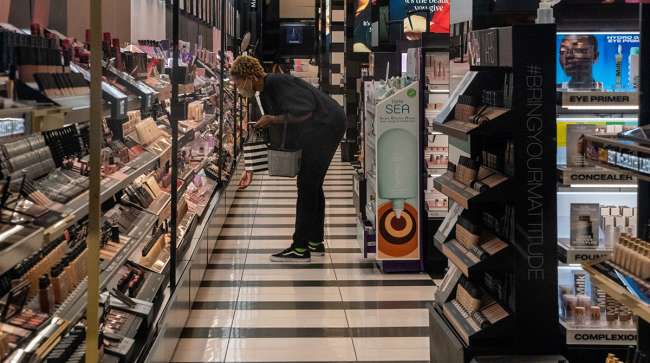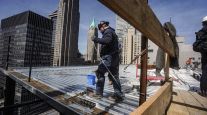Bloomberg News
US Adds Fewer Jobs Than Forecast; Unemployment Rate Falls

[Stay on top of transportation news: Get TTNews in your inbox.]
U.S. employers added fewer jobs in December than forecast, while the jobless rate fell below 4% and wages jumped, adding to evidence of a tight labor market that’s expected to help spur Federal Reserve interest rate liftoff as soon as March.
The 199,000 increase in nonfarm payrolls last month followed upward revisions in the prior two months, a Labor Department report showed Jan. 7. The unemployment rate fell to 3.9% while the labor force participation rate was unchanged.
The latest employment numbers suggest that despite still-robust labor demand, the factors that have kept a lid on hiring throughout the fall — a lack of child care, virus fears, large savings cushions — persisted late last year. The omicron variant, driving COVID-19 cases to record highs in recent days, is another wrinkle and poses a risk to the pace of employment growth in early 2022.
Against a backdrop of accelerating inflation, the drop in the jobless rate and faster wage growth may justify a quicker tightening of monetary policy. Fed officials noted at their December meeting that it may become warranted to increase that rate “sooner or at a faster pace than participants had earlier anticipated.”

New year, new resilience. Host Mike Freeze and reporters Connor Wolf and Eugene Mulero uncover the lessons 2020 and 2021 taught trucking's business leaders and consider business and legislative solutions in the year ahead. Hear a snippet above, and get the full program by going to RoadSigns.TTNews.com.
Traders continued to expect more than an 80% chance the Fed will raise interest rates in March, based on trading in federal funds futures.
Average hourly earnings rose a larger-than-forecast 0.6% in December from the prior month, while pay climbed 4.7% from a year earlier. Though rapid inflation is taking a big bite out of those gains, the sustained wage increases highlight employers’ willingness to pay more to attract and retain workers.
Last month’s jobs gain, which capped the biggest annual payrolls advance on record, compared with the median forecast of 450,000 in a Bloomberg survey of economists. The unemployment rate was projected to fall to 4.1%.
The survey period for the jobs report ended midmonth, so omicron-related impacts later in December will be reflected in the January report.
Industry Breakdown
The moderate advance in December was led by leisure and hospitality payrolls, which climbed 53,000. Professional and business service employment rose, while retail trade payrolls declined.
Meanwhile, both manufacturing and construction businesses reported solid hiring gains last month, a welcome sign that capacity constraints at factories and among builders may soon start to ease.
The report also includes routine revisions to the seasonally adjusted household survey data over the past five years. That survey is used to calculate statistics like the unemployment rate and labor force participation.
Depressed workforce participation combined with record quits levels has created a staffing nightmare for businesses. That has led to an extremely low level of layoffs and exacerbated the latest impact of omicron on businesses, prompting a host of temporary closures and canceling thousands of flights.
Recent earnings calls suggest ongoing staffing challenges well into 2022. Ara Hovnanian, CEO of Hovnanian Enterprises Inc., said on the homebuilder’s earnings call last month that labor shortages along with supply chain disruptions “are not just impacting the homebuilding industry, but they’re wreaking havoc on just about every industry across the globe.”
Structural factors are at play as well. A combination of declining birth rates, slowing migration and early retirements could lead to years — even decades — of worker shortages.
Want more news? Listen to today's daily briefing below or go here for more info:


